| Photojournal
- 26
October 2004
Ducks
in the distance
|
On Tuesday the 26th,
I got done with all of my meetings at work by a little after three,
and decided to head down to Iona Beach to see what was happening
there. I got there around quarter after four and that only gave
me an hour or so to take photos, as around 5:30 or so it was getting
too dark.
Well, I had one of
those days. The fowl just didn't seem to want to be anywhere near
me. I didn't get any good, clear shots of them. However, this
is meant to be more of a journal than a showcase of my best photos,
so I'll show you some of what I did get. Besides which, it gives
me the opportunity to discuss some birding stuff.
So here's what the
view at the outer ponds looked like. A number of ducks and other
birds, but mainly pretty far away. This photo actually gives you
about as much detail as I would see through my binoculars.
|
|
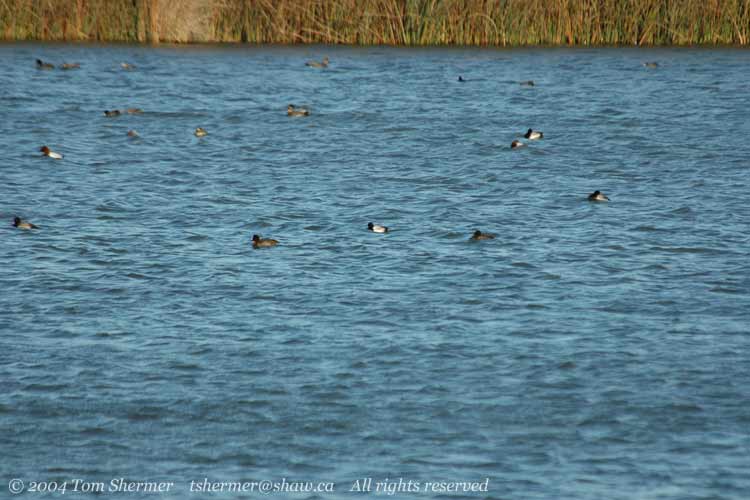 |
|
Now, what is interesting
to me is that a lot of birding is done at these ranges, viewing
about this much detail of the birds. Over the year, I've gotten
to where I can actually identify several of the birds in the above
photo, which is progress. Of course, there are folks who are much
better at that game than I...people who would nail all of the
birds in five seconds, if they saw the scene in real life.
Most of the ducks in
the front part of the photo are easy. There are three dark-bodied
ones, which are female Lesser Scaup. There are five white-bodied
ones, of which the two with red heads are male Canvasbacks and
the other three are male Lesser Scaup. The three birds in the
back right are American Coots (which one may not be able to tell
from this photo, but is easy to tell on the original) and the
one in the middle back is a male Gadwall. The rest are a little
too dicey for me to call.
The duck having the
distinction of getting the closest to me that afternoon was a
female Lesser Scaup. I like the way the water on the pond was
rippling and dark.
|
|
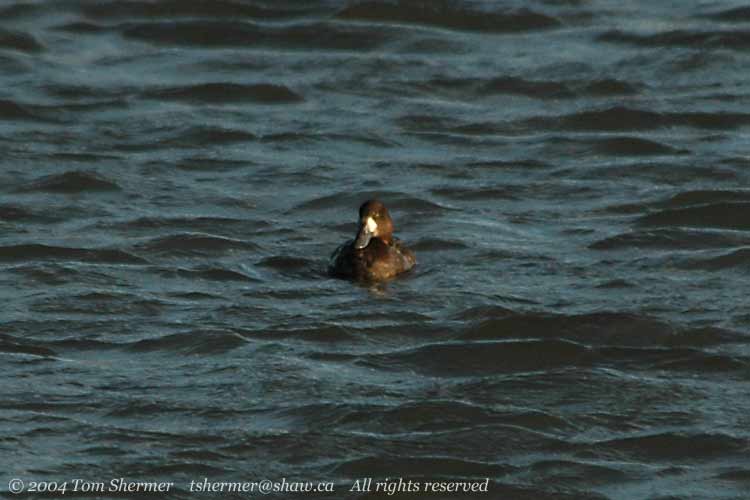 |
| Here's an
easier set of distant ducks to identify. |
|
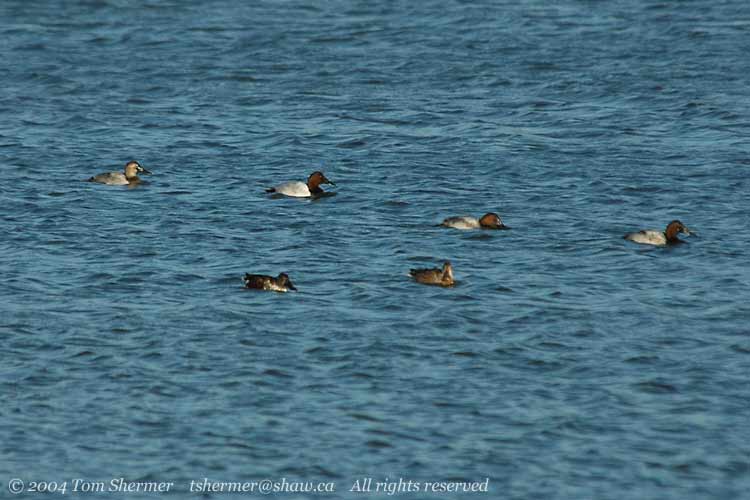 |
|
In this photo, the
four ducks in the rear are all Canvasbacks. The three on the right
(white body, red head) are males, and the left one (whitish body,
golden head) is female. The two ducks in the front are Northern
Shovelers, a male on the left and female on the right.
Here's a closer shot
of the same pair of Shovelers, which I caught later. Here the
female is on the left.
|
|
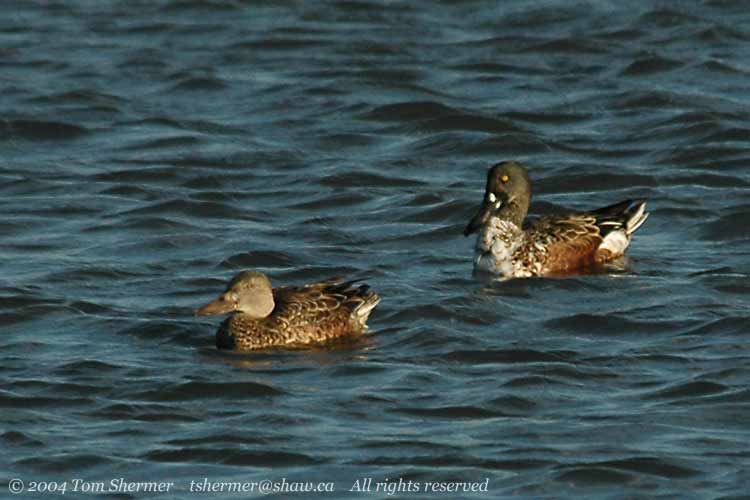 |
| There were
a lot of Canvasbacks out there that day. With their red head, they're
pretty easy to pick out. However, there was another type of red-headed
duck out there. Hopefully you can spot him in this photo. |
|
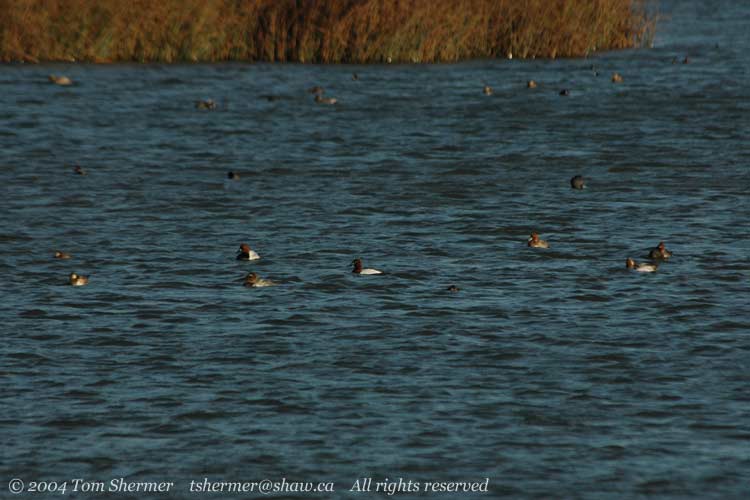 |
| He's the
duck that's about halfway to the right of the center of the picture.
Here's a blow-up of that section of the photo. |
|
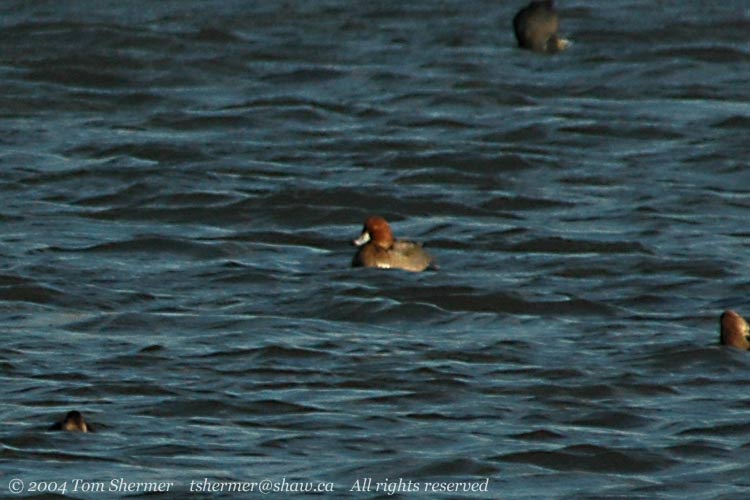 |
| This guy,
who is a male Redhead, stands out to me because he has a light (acutally
light blue) curved bill where all the Canvasbacks have a dark, angular
one. The red of his head is brighter than the Canvasbacks, and his
body is a bit darker. For comparison, here's what the male Canvasbacks
look like. |
|
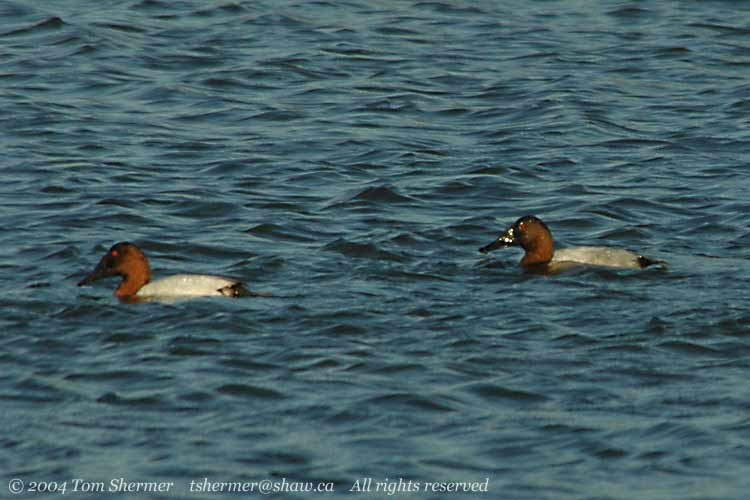 |
|
Canvasbacks and Redheads
are biologically very closely related; they're in the same genus
(Aythya)...that's about as close as you can get and not
be the same species.
As you probably know,
Male Canvasbacks are the evil minions of the bird gods; they have
the tell-tale glowing red eyes and dark pointy snout. They also
make eerie, squeaky hooting noises. If you find a flock of them
gathered at your front door late one night, grab your good book*
and flee to the nearest church. I never seen Canvasbacks follow
someone into a church.
On the other hand,
the female Canvasback is a balancing force--although she shows
the same overall shape as the male, she has a golden head and
neck, a clear indication of her goodness. She also doesn't have
those evil red eyes.
|
|
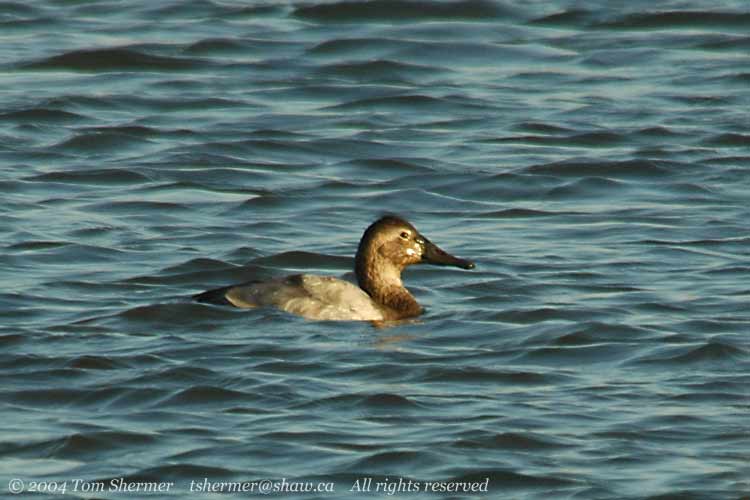 |
|
I eventually wrenched
my attention away from the eternal struggle of good vs. evil,
looked around, and found a few other birds. For instance, there
was this male Hooded Merganser.
|
|
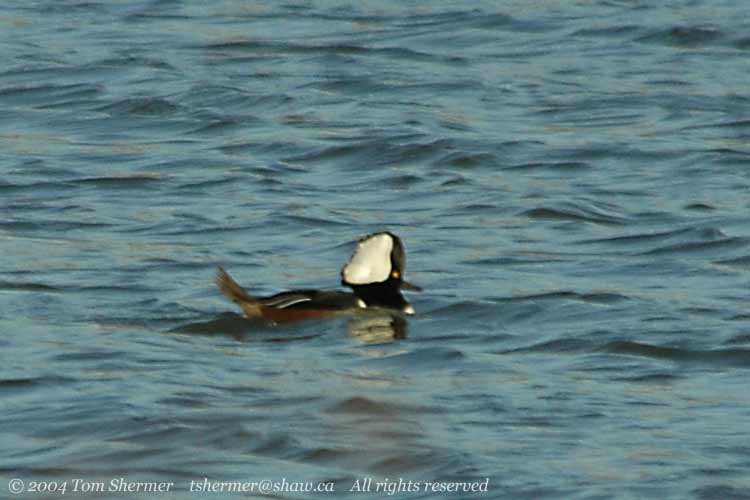 |
|
And also this female
Bufflehead.
|
|
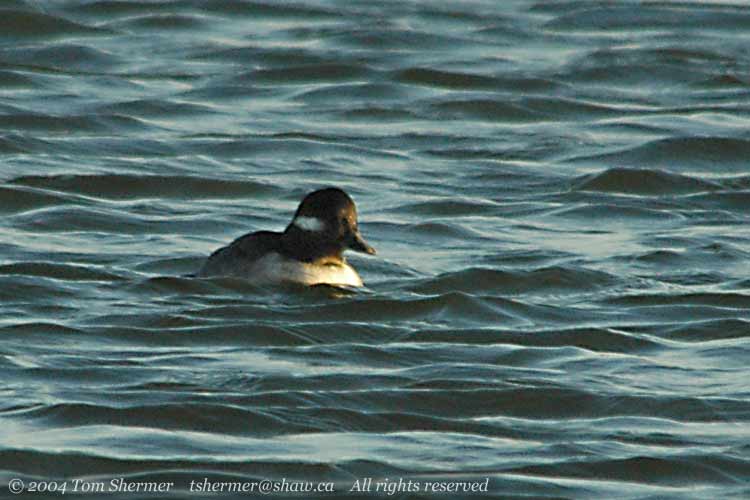 |
|
After about an hour,
I headed to the inner ponds, where I got a few pictures in the
orange light as the sun was setting. Here's a blurry pair of Gadwalls,
male on the left.
|
|
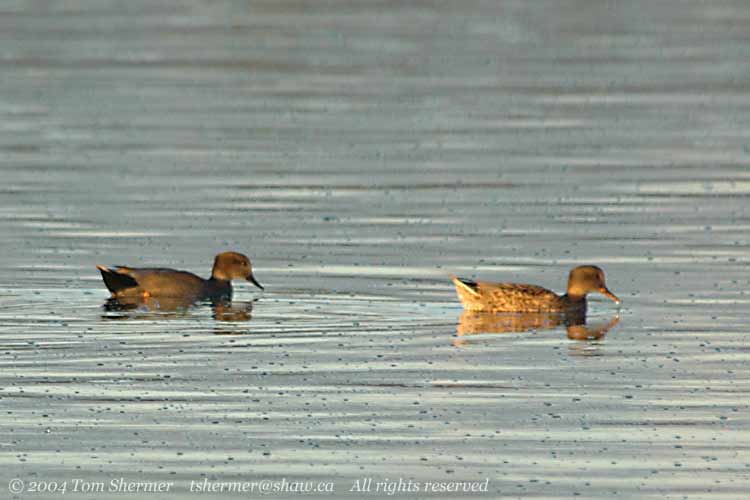 |
|
And my final bird photos
of the day were of this pair of Northern Pintails. In this shot,
the female is on the left.
|
|
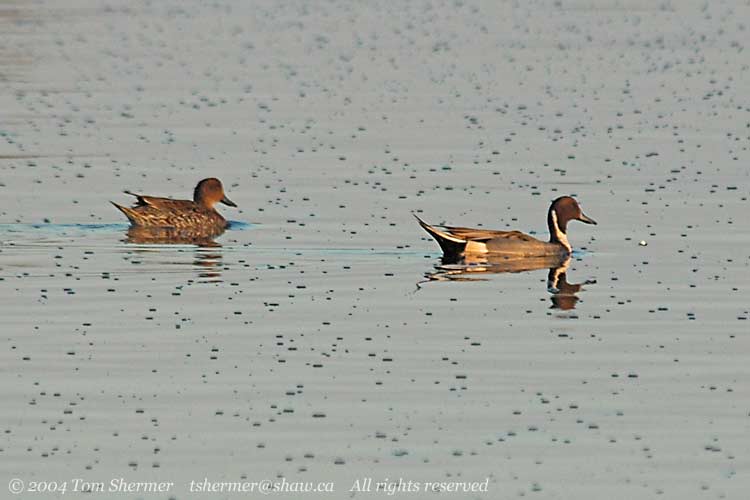 |
| I packed
up and headed home, but as I got to the east end of the airport
(Iona is around the northwest tip of the airport), I saw the moon
coming up. It was full, and being lit up by the orange sunset. To
top it off, the sky was purple at the moment. So I just had to get
out a take some landscapes. Here's one with the moon relatively
low, over an office building. |
|
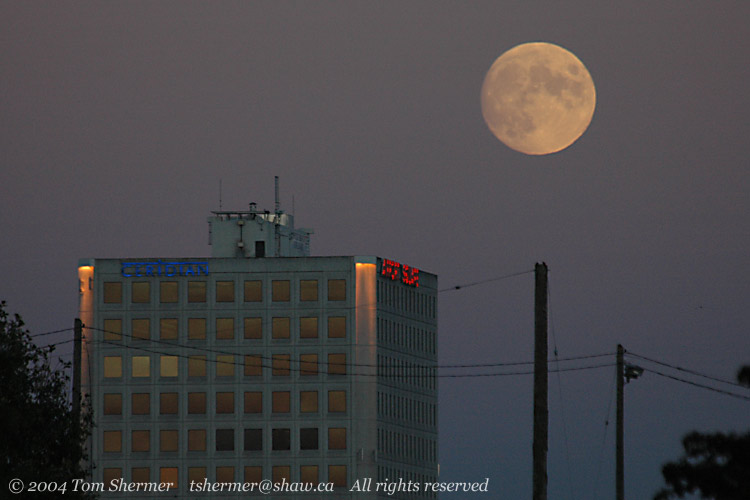 |
|
And here's another
one from later, with the Arthur Laing and Oak Street bridges in
the foreground. That dot to the right of the moon is a bird of
some sort, but I'm not yet skilled enough to name the species.
|
|
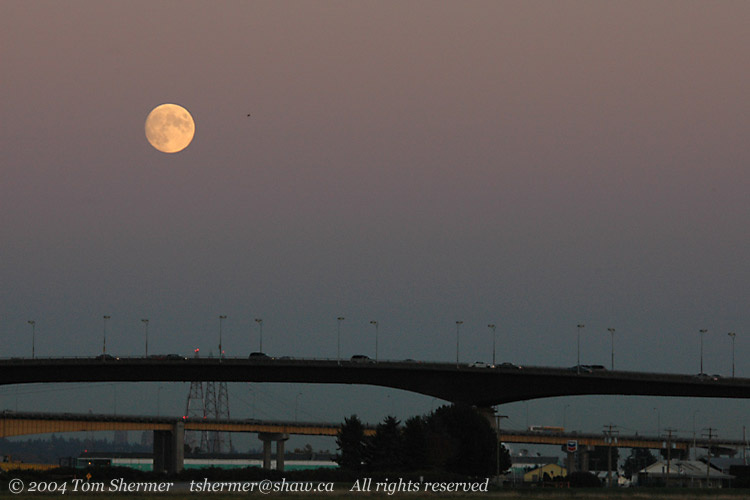 |
|
I went home content;
the birds may have avoided me but the moonrise really made up
for it. I shouldn't have been so surprised about the moon, as
the next night the eclipse was due. As for the birds, well, some
days are just like that.
Happy with what I can
get,
Tom
*good book = Sibley's,
or Peterson's, or Audubon, etc.
|
|
|